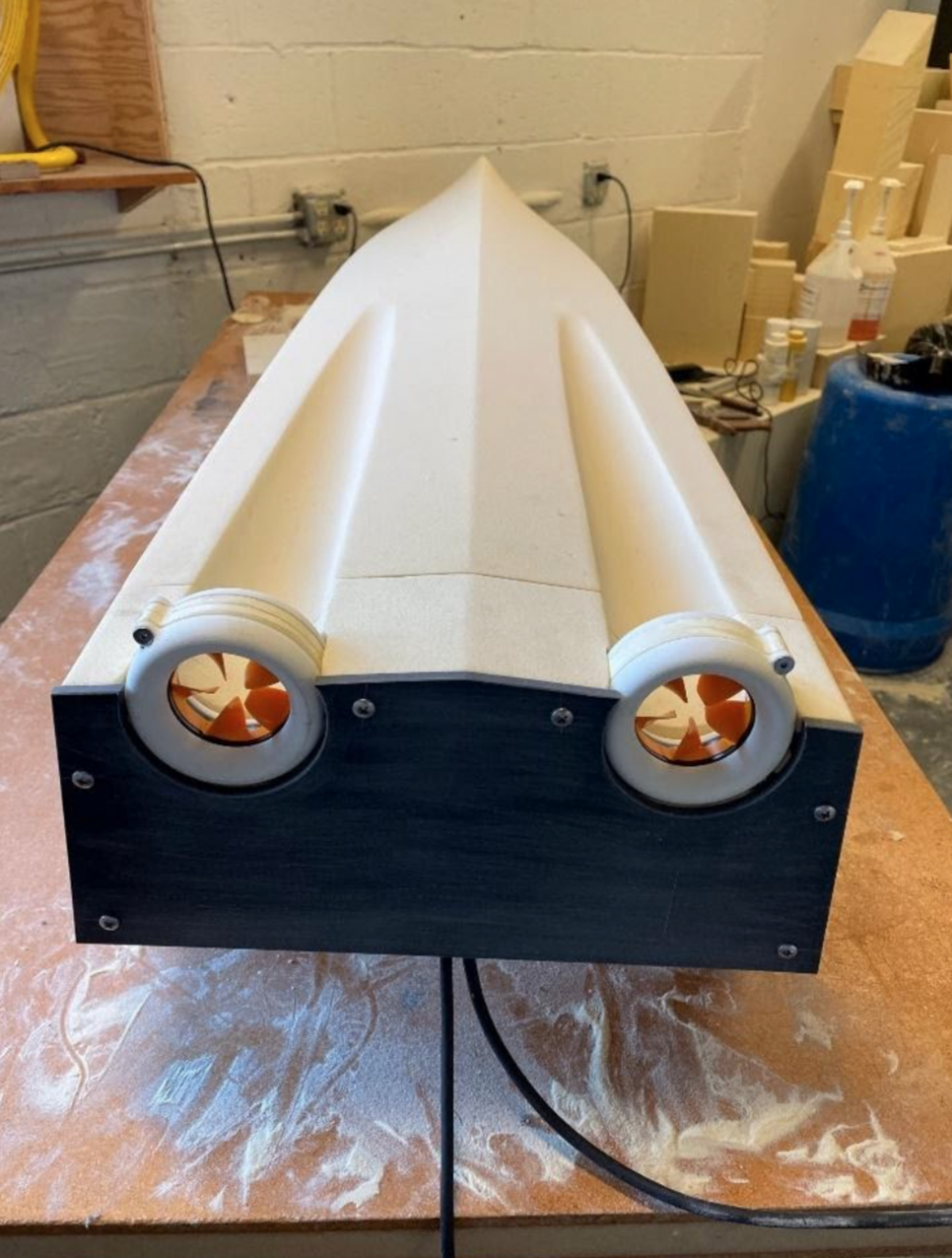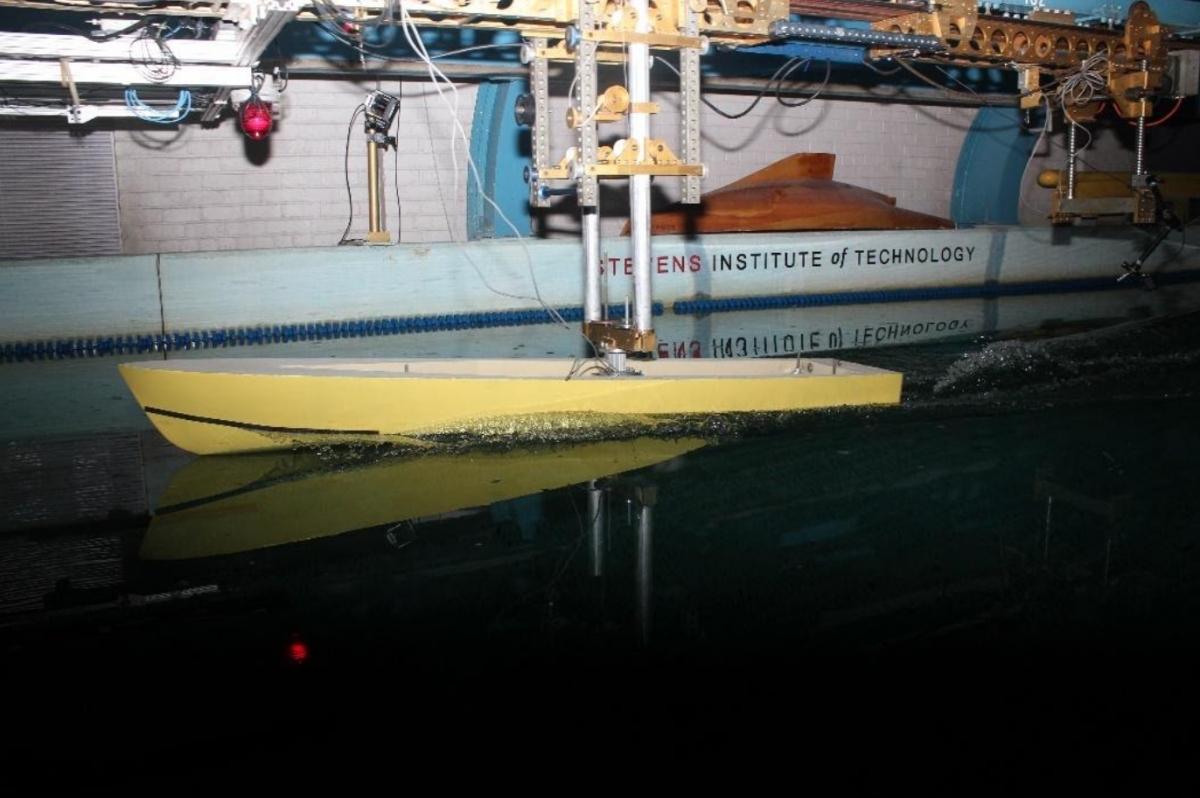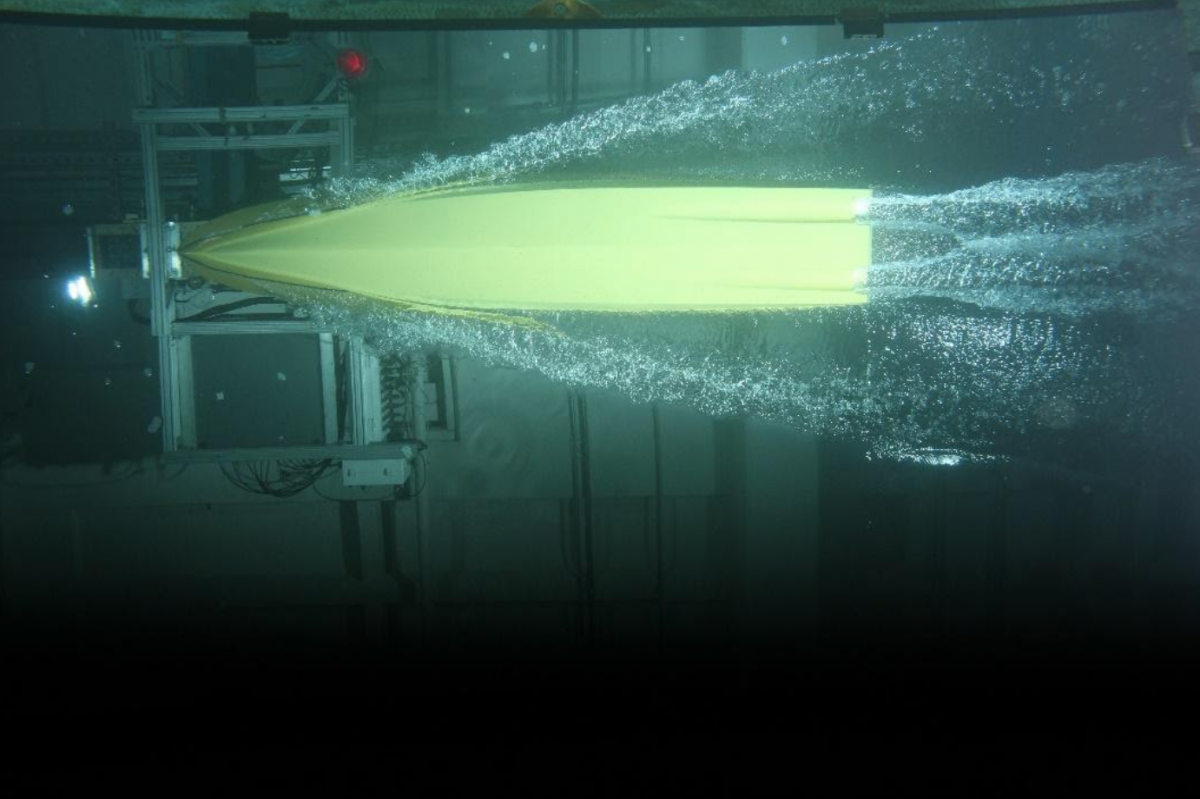Stevens Students Win Top Spot at the American Society of Naval Engineers' Promoting Electric Propulsion Competition
Achievement spotlights Stevens’ continued excellence in ship design research and student programs
In the fall of 2020, an interdisciplinary group of Stevens Institute of Technology seniors embarked on a two-semester project to design, fabricate, test and race an electric-powered boat.
When summer 2021 arrived, these students emerged as first-place winners at the American Society of Naval Engineers’ (ASNE) Promoting Electric Propulsion (PEP) competition, an educational and competitive program to develop and race electric-powered boats in the United States.
The students — now graduates of Stevens — included naval engineering majors Andrew Mueller' 21' and Joshua Graham' 21', electrical and computer engineering major Roni Sistoso' 21', and mechanical engineering majors Jiaqi Li '21, Joseph Deitz'21 and Yijun Liu '21.
ASNE, the leading professional engineering society for engineers, scientists, and allied professionals, hosted the annual PEP competition in Baltimore, Maryland. This year's event, supported by the U.S. Department of the Navy's Office of Naval Research, included participation from 13 universities and colleges.
"This win, along with our recent success in solar boat competitions, shows Stevens' continued excellence in ship design and the emerging areas of electric propulsion and autonomous vessels," said Raju Datla, research associate professor at the Stevens Civil, Environmental and Ocean Engineering Department.
From fully remote to in-person collaboration
The team's ultimate design, named the Stevens Autonomous Surface Surveyor (SASS), was built for a target cruising speed of 8 knots. It was also designed for practical purposes such as ocean monitoring, coastal surveying, and environmental research. So, they selected a semi-displacement hull for speed and stability for sensors and electronics and designed the boat to operate by autonomous navigation using GPS waypoints.
Building a sea vessel is a very hands-on project. It involves many physical activities, such as making prototypes and working with metal plates and electrical and mechanical parts. Ship design also relies on collaboration from individuals specializing across different areas – from electrical engineers working on electrical systems to naval engineers creating hull prototypes.
However, from the start of the project, the disruptions caused by the pandemic hampered the team's ability to meet in person and collaborate.
Stevens is committed to providing students with cutting-edge technology, tools, and state-of-the-art labs. But in light of the COVID-19 pandemic disruptions, the students needed to adapt without access to on-campus resources to achieve a two-pronged goal: completing their senior capstone design project and building a winning vessel for the competition.
The team set up remote processes for simultaneous work across geographically dispersed locations to mitigate the challenges.
Then, in the 2021 spring semester, a lifesaver: the team was able to work on the Stevens campus in Hoboken, New Jersey. They fabricated the hull in the Stevens' machine shop and conducted hydrodynamic tests at Stevens' High-Speed Towing Tank located at the Davison Lab.
"I enjoyed returning to the labs, watching the hull be cut in the machine shop, and being able to work with others in person again," Sistoso said. The team started the project remotely but finished the concept selection, engineering analysis, preliminary design, and simulation for the alpha prototype on campus.
Stevens' senior capstone project helped fill in the experience gap
Amid the pandemic, many college students lost internship opportunities. Approximately 22 percent of employers revoked internships in April 2020, according to a National Association of Colleges and Employers survey.
"I had an internship lined up for the summer of 2020, but it was canceled because of the pandemic," said Sistoso. "When senior year began, and the October career fair came closer, I was embarrassed about my empty resume."
Thankfully, the senior capstone project provided him with a real-world experience opportunity.
"This was my first real project, and I learned a lot about project leadership and working as a professional engineer," he said.
Stevens seniors were advised to include their senior design project in their resume, and Sistoso did just that. It helped land him a job as a Network Engineer for the U.S. Navy. He works in a civilian capacity for Naval Air Warfare Center Aircraft Division (NAWCAD) Lakehurst, supporting aircraft launch and recovery equipment.
"When I was interviewing for NAWCAD, the interviewer, who is now my supervisor, spoke highly of the project, calling it an impressive feat of naval engineering and computer networking," Sistoso said.
Not all team members were able to be present at the physical site of the competition in Baltimore. Andrew Mueller was the only member of the team who attended the event, where he received the first-place trophy on behalf of the team. He was joined by current Stevens naval engineering students Kate Killian ‘23 and Austin Robertson ‘21.
The main reason why some of the other project participants could not attend the event was that they had already started on the next phase of their careers after graduating from Stevens.
For example, Liu got hired as a mechanical engineer at a construction company. He concludes that the senior design project enabled him to practice and improve his modeling and communication skills, which helped him get the job.
His teammate, Li, continues his Stevens education, working on his Ph.D. degree in mechanical degree focusing on computational fluid dynamics.
Learn more about civil, environmental, and ocean engineering at Stevens:
Civil, Environmental, and Ocean Engineering Dept
Learn more about research in the Department of Civil, Environmental and Ocean Engineering →





